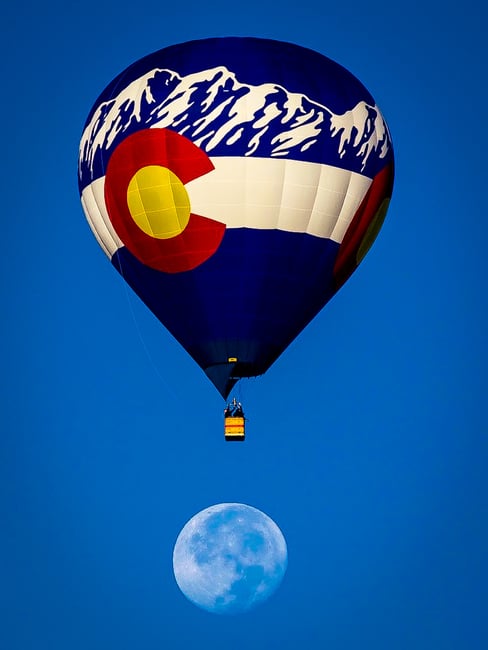How to Photograph Hot Air Balloons
Some of the most rewarding and relatively easy subjects to photograph are the growing number of hot air balloons floating in the skies. If you have the willingness to wake up early, you can have good luck photographing a very colorful and slow-moving subject to display for your friends and family.
Now I need to make a disclaimer – while there are many pockets around the world that have ballooning, I am fortunate enough to live in the crown jewel for ballooning, Albuquerque, New Mexico in the US. Each October, the city hosts its International Balloon Fiesta, with as many as 600 hot air balloons and over 800,000 attendees participating in the weeklong event. In December, the second largest hot air balloon festival is hosted in Gallup, New Mexico, with some 200 pilots taking to the heavens. Other New Mexico cities host smaller events (20-50 balloons) during the year as well. The open skies and favorable wind conditions in New Mexico result in spectacular viewing and numerous photographic opportunities. However, you should be able to find good hot air balloons to photograph in most locations with a little planning.
 NIKON D750 + 28-75mm f/2.8 @ 45mm, ISO 1250, 1/160, f/5.6
NIKON D750 + 28-75mm f/2.8 @ 45mm, ISO 1250, 1/160, f/5.6
Some of the most rewarding and relatively easy subjects to photograph are the growing number of hot air balloons floating in the skies. If you have the willingness to wake up early, you can have good luck photographing a very colorful and slow-moving subject to display for your friends and family.
Now I need to make a disclaimer – while there are many pockets around the world that have ballooning, I am fortunate enough to live in the crown jewel for ballooning, Albuquerque, New Mexico in the US. Each October, the city hosts its International Balloon Fiesta, with as many as 600 hot air balloons and over 800,000 attendees participating in the weeklong event. In December, the second largest hot air balloon festival is hosted in Gallup, New Mexico, with some 200 pilots taking to the heavens. Other New Mexico cities host smaller events (20-50 balloons) during the year as well. The open skies and favorable wind conditions in New Mexico result in spectacular viewing and numerous photographic opportunities. However, you should be able to find good hot air balloons to photograph in most locations with a little planning.
 NIKON D750 + 28-75mm f/2.8 @ 45mm, ISO 1250, 1/160, f/5.6
NIKON D750 + 28-75mm f/2.8 @ 45mm, ISO 1250, 1/160, f/5.6









تعليق